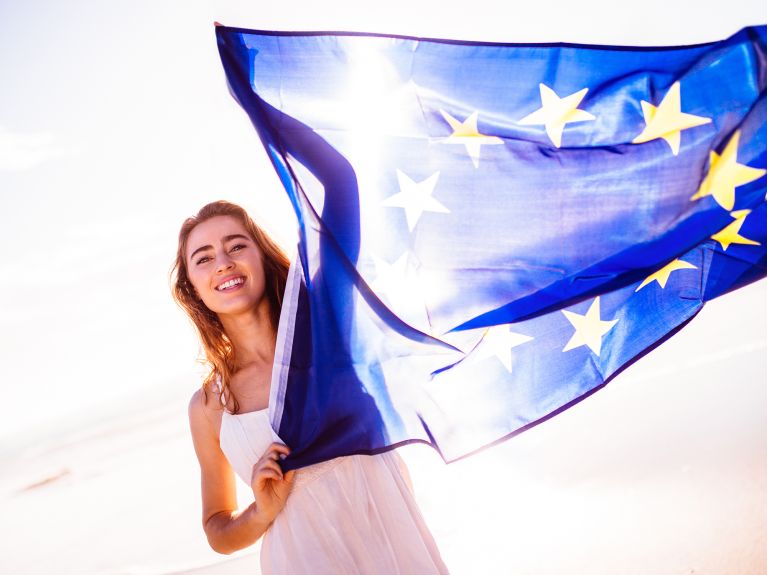This is the EU – short and simple
Here you will find answers to the most frequently asked questions about the European Union.

What are the 27 EU countries?
The European Union is an association of countries that currently has 27 member states: Austria, Belgium, Bulgaria, Croatia, Cyprus, the Czech Republic, Denmark, Estonia, Finland, France, Greece, Germany, Hungary, Ireland, Italy, Latvia, Lithuania, Luxembourg, Malta, the Netherlands, Poland, Portugal, Romania, Slovakia, Slovenia, Spain and Sweden.
Why was the European Union formed? What is the European Union and what is its purpose?
How can lasting peace be secured in Europe? Trade relations, a stable economy and prosperity would make it possible to overcome the animosity, suffering and destruction of the Second World War. This idea gave rise to the forerunners of the EU, the European Coal and Steel Community (ECSC) and the European Economic Community (EEC), from 1952. Since 1993 the association of states has been called the European Union, or EU for short.
More information: EU at a glance
What are the main aims of the European Union?
- Peace and prosperity for all people in Europe
- Economic and monetary union
- Promotion of shared EU values: human dignity, freedom, democracy, equality, the rule of law and human rights
- Freedom and security within internal borders
- Economic, social and territorial cohesion and solidarity between the member countries.
What are the benefits of the European Union?
The European Union has proved itself as the greatest peace project in history. Its citizens enjoy many freedoms. These include, for example, the freedom to live and work or study in all member states, as well to do business or benefit from the advantages of the free capital market. Furthermore, the EU guarantees food safety and consumer protection and promotes the development of regional infrastructure.
Dieses YouTube-Video kann in einem neuen Tab abgespielt werden
YouTube öffnenThird party content
We use YouTube to embed content that may collect data about your activity. Please review the details and accept the service to see this content.
Open consent formWho controls the EU?
A bureaucratic monster in Brussels that thinks up complicated laws? No! When you hear “Brussels has decided”, it means that all EU member states have made a joint decision. Under the normal legislative procedure, proposals for new laws are drafted by the European Commission. These are then decided on by the European Parliament, which has been directly elected by EU citizens, as well as the Council of Ministers, in which the ministers of the member states are represented.
Overview: EU institutions
Which countries use the euro?
The euro, the common currency, is the official means of exchange in 20 EU states. The members of the eurozone are Austria, Belgium, Croatia, Cyprus, Estonia, Finland, France, Greece, Germany, Ireland, Italy, Latvia, Lithuania, Luxembourg, Malta, the Netherlands, Portugal, Slovakia, Slovenia and Spain (status in May 2023).
Other states intend to introduce the euro when they satisfy the necessary economic stability criteria. Denmark, on the other hand, rejected participation in the currency union.
Why are there 12 stars on the European Union flag?
The circle of twelve golden stars against a blue background stands for the values of the European Union: unity, solidarity and harmony between the peoples of Europe. The circle is a symbol of unity. However, unlike many people assume, the stars do not represent the member states, because otherwise their number would have steadily increased since the EU was founded. Twelve has symbolic meaning in many cultures and often stands for perfection. The European flag was initially the flag of the Council of Europe from 1955. It became the symbol for EU institutions in 1985.


